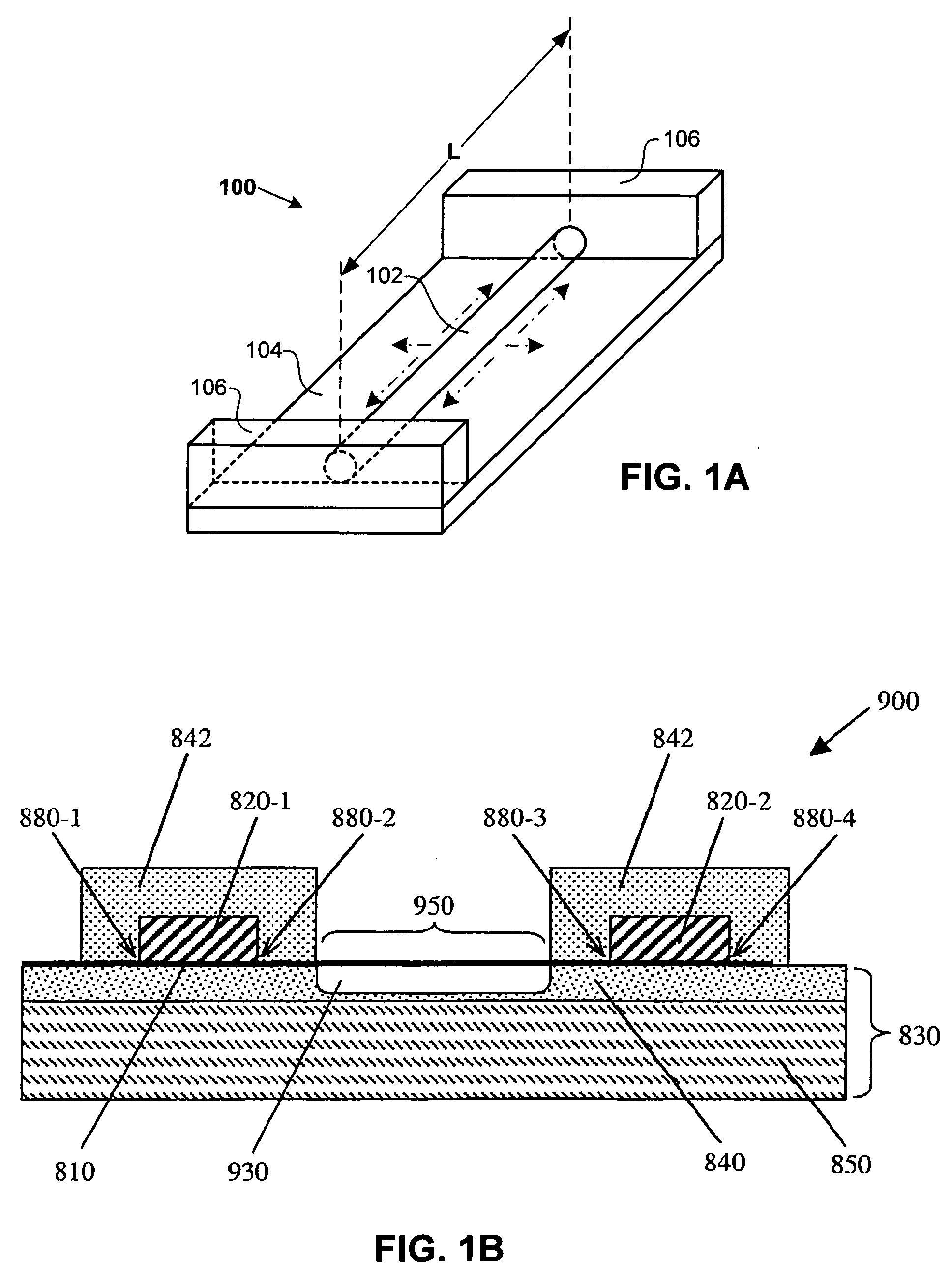Nanoelectronic sensor with integral suspended micro-heater
a technology of nanotube sensors and micro-heaters, which is applied in the field of nanoelectronic sensors with integral suspended micro-heaters, can solve the problems of time-consuming and laborious, and achieve the effects of improving the responsiveness of nanotube sensors to hydrogen and other materials, accelerating the response, and improving the responsiveness of nanotube sensors
- Summary
- Abstract
- Description
- Claims
- Application Information
AI Technical Summary
Benefits of technology
Problems solved by technology
Method used
Image
Examples
embodiment 40
[0068]FIGS. 4.1-4.8 illustrate the structure of a sensor device embodiment 40 having aspects of the invention and including an exemplary micro-hotplate. For purposes of clarity in describing the physical relationship of the various elements of device 40, the exemplary process steps shown in FIGS. 4.1-4.8 will be discussed first. The exemplary fabrication processes shown are generally similar to those described in U.S. Pat. No. 6,894,359 entitled “Sensitivity Control For Nanotube Sensors”, which is incorporated by reference.
[0069] It should be understood, however, that the process steps shown in the figures are only examples, and that the technology of the electronics industry and related materials science, and in particular the technology of the MEMS, micro-machining and wafer processing industries provide a wide variety of process and materials alternatives which may be employed in making structures such as that of device 50, without undue experimentation and without departing from...
embodiment 60
[0091]FIGS. 6.1-6.10 shows an alternative sequence of exemplary steps which may be employed for making the sensor device embodiment 60 having aspects of the invention. The fabrication processes shown make use of the differential in etch rate of porous silicon versus a crystalline silicon substrate, of the general nature of the processes described in US Published Application 2004-0195,096; and C. Tsamis et al, Physica Status Solidi (a), Vol. 197 (2), p. 539-543 (2003); as well as G. Kaltsas et al, “Front-side bulk silicon micromachining using porous silicon technology”, Sensors and Actuators: A, 65, (1998) p.175-179; and G. Kaltsas et al, “Bulk silicon micromachining using porous silicon sacrificial layers”, Microelec. Eng. 35, (1997), pp. 397-400, each of which are incorporated by reference.
[0092]FIG. 6.1 is a cross section showing the initial substrate 61 of device 60, in this example a doped monocrystalline silicon wafer.
[0093]FIG. 6.2 is a cross section showing the a pattern reg...
PUM
 Login to View More
Login to View More Abstract
Description
Claims
Application Information
 Login to View More
Login to View More - R&D
- Intellectual Property
- Life Sciences
- Materials
- Tech Scout
- Unparalleled Data Quality
- Higher Quality Content
- 60% Fewer Hallucinations
Browse by: Latest US Patents, China's latest patents, Technical Efficacy Thesaurus, Application Domain, Technology Topic, Popular Technical Reports.
© 2025 PatSnap. All rights reserved.Legal|Privacy policy|Modern Slavery Act Transparency Statement|Sitemap|About US| Contact US: help@patsnap.com



